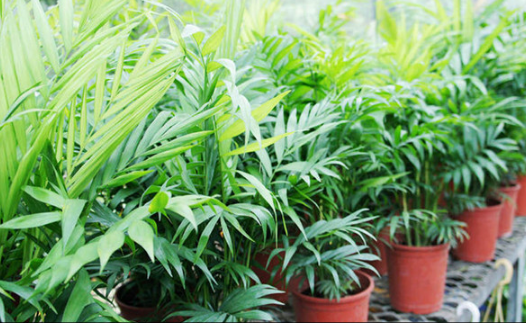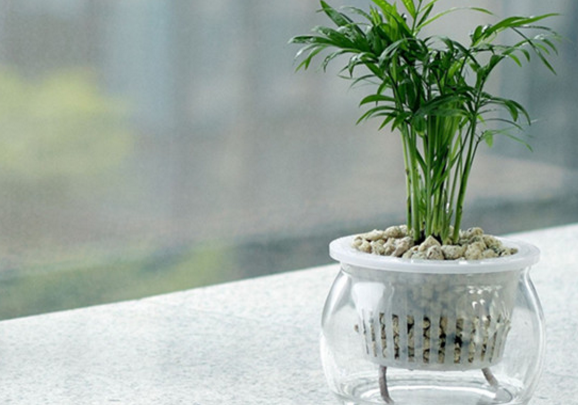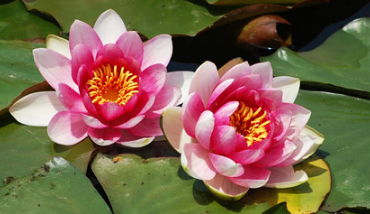How to sow and reproduce pocket coconuts? what is the language of flowers?
Pocket coconut is named pocket coconut because its plant type is very similar to tropical coconut tree, its shape is small and exquisite, beautiful and chic. It symbolizes vitality. So do you know how this vital plant propagates? Next, let's find out about it.

How to sow and reproduce pocket coconuts
1. Pocket coconut seed treatment
Before the pocket coconut is sown, you need to choose the right seed first. Only if the seed is selected well, the sowing can be successful. When sowing, it is best to choose the seeds harvested in the same year, because the seeds can not be preserved for a long time, which will affect the germination rate of the seeds. Seeds are preferably full and complete without diseases and insect pests.
The selected seeds need to be sterilized and the soil needs to be sterilized. The sterilized seeds need to continue to germinate and soak the seeds in warm water for 24 hours. When the seeds are absorbed and inflated, it will be fine.
2. The sowing method of pocket coconut
The seeds of the budding pocket coconut can be used to sow, and the time range of the pocket coconut sowing is relatively wide, which can be carried out in spring and summer, autumn and winter.
Sow the seeds of pocket coconuts on the prepared soil, and pay attention to cover a layer of soil after sowing, about one centimeter. After sowing, put the whole sowing pot into the water, and pay attention to the water depth up to 2/3 of the height of the flowerpot, so that the water can slowly infiltrate up and soak the soil.
3. Matters needing attention for pocket coconut sowing
After sowing, pocket coconuts need to be maintained and managed. First of all, if it is really early spring, late autumn or winter sowing pocket coconut, need to pay attention to the maintenance temperature, because these times the temperature is relatively low, the need for heat preservation, you can use plastic film to wrap the flowerpot, can keep warm and moisturizing.
When the pocket coconut begins to emerge, lift the plastic film. After all the seeds come out, you need to keep the seedlings that grow better. When the seedlings grow more than 3 leaves, you can transplant them.
What is the pocket coconut language?
The flower words and symbols of pocket coconuts represent meaning: vitality
Pocket coconut plant is small and exquisite, symbolizing vitality, coupled with pocket coconut shade resistance, it is very suitable for indoor small and medium-sized potted plants, decorating living room, study, conference room, hotel service desk and other indoor environment, which can add tropical atmosphere and charm. Put it at the corner of the room or on the coffee table can add business atmosphere to the room and make the room show a charming tropical scenery. It's a very good indoor ornamental plant.
Pocket coconut cultivation method, pocket coconut picture appreciation
The pocket coconut, native to Mexico and Guatemala, is an ornamental indoor potted plant. It is named for its small and exquisite, beautiful and chic. As a small and medium-sized indoor potted plant, it can add tropical atmosphere and charm to the indoor. Today, here, the editor will tell you about the breeding method of pocket coconut, and attach a picture of pocket coconut for your appreciation. [editor strongly recommended] indoor plants touch fragrant wood hydroponics plants small potted plants flowers plants fengshui radiation protection plant lover grass [pocket coconut] pocket coconut culture method, pocket coconut picture-
[plant archives]-
English name: pocket coconut
Scientific name: Chamaedorea elegans
Alias: dwarf coconut, pocket brown, dwarf brown
Family: Palmaceae
Genus: pocket coconut
Distribution of origin: originated in Mexico and Guatemala.
Morphological features: pocket coconut pot plant, plant height is not more than 1 meter, its stem is slender and erect, unbranched, dark green, with irregular rings. Leaves from the top of the stem, pinnately compound leaves, split, lobes broadly lanceolate, pinnate leaflets 20-40, sickle-shaped, dark green, glossy. The plant is spring flowering, fleshy spikes axillary, dioecious, male flowers slightly erect, female inflorescences drooping slightly when nutritious conditions are good, flowers yellow are bead-shaped; small berries are mostly orange-red or yellow.
How to raise pocket coconuts? -
◆ growth habits: like warm, humid and semi-shady environment. The suitable temperature for growth is 20-30 degrees, entering the dormancy period at 13 degrees, and the lowest overwintering temperature in winter is 3 degrees.
◆ potted soil: pocket coconut potted plants can generally be made of rotten leaf soil, peat soil plus 1 bank 4 river sand and a small amount of base fertilizer as the substrate. It is best to plant in a loose and fertile loam with good drainage.
◆ watering: watering is based on the principle that it is better to be wet than dry, and the basin soil can always be kept moist. When the air is dry in summer and autumn, we should often spray water to the plants to improve the air humidity of the environment, which is beneficial to its growth, while keeping the leaves dark green and shiny, and appropriately reduce the amount of water in winter to facilitate overwintering.
◆ fertilization: pocket coconut does not have high requirements for fertilizer. Generally, liquid fertilizer is applied twice a month in the growing season, with little or no fertilization at the end of autumn and winter. The basin is changed in spring every 2-3 years.
◆ propagation: pocket coconuts are generally propagated with seeds.
◆ temperature setting: the suitable temperature for growth is 15-30 ℃, including 19-30 ℃ from May to September and 13-16 ℃ from October to April of the following year. It can withstand the high temperature of 35 ℃ in summer, and when the temperature is above 35 ℃, proper shading or measures such as water spraying and ventilation should be taken. The ambient temperature should be maintained at no less than 5 ℃ in winter, otherwise the long-term temperature below 5 ℃ will be easy to freeze and fall leaves.
◆ location: pocket coconuts have a high tolerance to light, but 50-60% of sunshine is the best in the shade.
◆ disease control: in addition, pocket coconut is prone to social brown spot under high temperature and high humidity. If brown spot is found, it should be prevented and treated with 800Mel 1000-fold topiramate or carbendazim in time. Scale insects are also easy to occur in dry air and poor ventilation. If shell insects are found, they can not only be scraped manually, but also be sprayed with 800m / 1000 times omethoate.
The cultivation of pocket coconuts-
① sowing
Selection: the seeds should be selected before sowing. Whether the seeds are good or not is directly related to the success of sowing.
◆ selects seeds that are free from diseases and insect pests.
◆ chooses full seeds without defective or abnormal seeds.
It is best for ◆ to choose the seeds harvested in the same year. The longer the seed is preserved, the lower the germination rate is.
Disinfection: disinfection includes two concepts, one refers to the disinfection of seeds, and the other refers to the disinfection of sowing substrates
Sprouting: soak the seeds in warm hot water for 12 to 24 hours until the seeds absorb water and expand. For common seeds that germinate easily, this work does not have to be done.
Method: for small seeds that are difficult to pick up with hands or other tools, wet one end of the toothpick with water, stick the seeds one by one on the surface of the matrix, cover the substrate 1 cm thick, and then put the seeding pot into the water. The depth of the water is 1 stroke, 2 feet, 2 hands, 3, and let the water soak up slowly. For larger seeds that can be picked up by hand or other tools, put the seeds directly into the substrate and order them at a distance of 3 × 5 cm.
Management: after sowing in late autumn, early spring or winter, when you encounter a cold wave and low temperature, you can wrap the flowerpot with plastic film to keep warm and moisture. after the seedlings are unearthed, the film should be uncovered in time, and after most of the seeds come out, the seedlings need to be properly planted: pull out the diseased and unhealthy seedlings, so that there is some space between the seedlings left behind. When most of the seedlings have three or more leaves, they can be transplanted.
② ramet
Methods: the mixed matrix of peat and perlite was selected, and the plastic flowerpot with a diameter of 15 cm to 20 cm was used as the drainage layer. The one-year-old soilless potted pocket coconuts were planted in the flowerpots of the above-mentioned mixed substrate, with 3 to 4 plants per pot.
Humidity: keep the relative humidity of the air at 75-85%. The basic requirement of ear rooting is that before the cuttings take root, it must be ensured that the cuttings are fresh and tender and can be used to produce rooting substances. But cuttings that do not take root cannot absorb enough water to maintain their water balance.
Lighting: can not do without the sun, after cutting must cover 50% 80% of the sun, wait for the root system to grow, and then gradually remove the shading net: when it is sunny, remove the sunscreen at 4:00 every day, and cover it before 9:00 the next day.
To raise pocket coconuts, we should pay attention to the following technical problems:-
In the seedling stage of ◆, the rarefied liquid fertilizer should be applied for 3 to 4 times in spring and spring.
◆ beware of focusing edges caused by too much light. Because pocket coconuts prefer a shady environment, indoor cultivation should be placed near the north window, east window or other places with bright scattered light; pocket coconuts are most afraid of direct light, even if exposed to the sun for a short time, it will also cause the leaves to scorch and turn yellow. On the contrary, if it is kept in a dark, dry place for a long time, the color of the leaves will become lighter and lose its luster.
The suitable temperature for ◆ growth. Generally, the optimum temperature for growth is 20: 30 ℃. In winter, the indoor temperature is between 12 and 14 ℃, and the lowest temperature can not be lower than 10 ℃. At the same time, it also maintains the humidity of the surrounding air. It is necessary to spray water on the leaf surface frequently to increase the air humidity. ◆ needs to be changed every 3 years. Acid soil should not be used in the basin soil, and a small amount of clay should be added. The role of pocket coconuts-
Pocket coconut not only has high ornamental value, but also can purify benzene, trichloroethylene and formaldehyde in the air. It is a "high efficiency air purifier" in plants. It is very suitable for indoor or newly decorated rooms.
Conclusion: pocket coconut is a popular indoor potted plant in the north, which has been popular all over the world in recent years. Many consumers will always be attracted by its green color. I believe that as long as we know how to cultivate pocket coconuts and take good care of them, then pocket coconuts will show a perfect posture of beautiful plant shape, elegant posture and bright green leaves.
[more Encyclopedia of plants]
The culture method of Douban green the culture method of iron tree the function of cactus the characteristics of peony flower how to raise Milan flower
The culture methods and precautions of green pineapple? does the fairy ball protect against radiation? the current culture method of cyclamen leaves yellow and blue witch price
The cultivation method of iron tree of rich bamboo and iron tree is the rubber tree poisonous? is the sun flower language safe tree cyclamen water lily Phnom Penh tiger orchid
How to raise nine big flowers of Cymbidium, Cymbidium, Red Palm, Red Crane, poisonous Cymbidium, Cymbidium, C
The cultivation method of pocket coconut, can pocket coconut be hydroponically cultivated?
Pocket coconut is a small evergreen shrub that is generally appreciated as a potted plant. Pocket coconut its stem erect, unbranched, dark green, with irregular patterns. We all know that the breeding methods of many plants are different, so what is the breeding method of pocket chairs? Can pocket coconuts be hydroponically cultivated? Let's take a look.
Cultivation methods of pocket coconuts:
1. Sowing and reproduction: select seeds before sowing pocket coconuts. Of course, the seeds must be good, pest-free and non-deformed.
2. Light: pocket coconut is naturally fond of light, and its growth is inseparable from sunlight, because cuttings continue to carry out photosynthesis to produce nutrients and rooting materials to meet their rooting needs.
Temperature: pocket coconuts like warmth, the suitable temperature for growth is about 18 Mel 24 degrees Celsius, 13 degrees Celsius goes into dormancy. It's best not to be less than 10 degrees Celsius in winter.
4. Watering: watering is an indispensable part. Pocket coconuts like water, keep the soil moist during the growth period, and wait until 2/3 of the basin soil is dry during the dormant period before watering.
5. Fertilization: in addition to watering, of course, pocket coconuts apply compound fertilizer once a month during the growing period. This helps pocket coconuts to grow well.
Can pocket coconuts be hydroponically cultivated?
In fact, pocket coconuts can be hydroponically cultivated, but some related problems should also be paid attention to during hydroponics, otherwise it is difficult to maintain pocket coconuts.
The main results are as follows: 1. The hydroponic material adopts the method of potted root washing, and new roots can grow in a few days after washing.
2. Avoid direct sunlight so that the leaves will turn yellow and the color of the leaves will turn pale slowly.
Conclusion: in fact, according to the configuration of nutrient solution and the choice of growth environment, many plants can be hydroponically cultured, but they need careful care when hydroponic culture, otherwise it is easy to let flowers die because of nutrition! So pocket coconuts can be hydroponically cultivated, but they need careful care. I hope the above suggestions can help you. More information: | Flower language of calla lotus | Happiness tree cultivation method | efficacy and function of rose flower | function of cactus fruit | Hangzhou white chrysanthemum | | efficacy and function of Ping an tree osmanthus tea | efficacy and function of gynostemma pentaphyllum | efficacy and function of rosemary | Banyan bonsai | | planting of marigold | maintenance method of happiness tree | Flower picture and name | function of green rosacea | how to raise gardenia |
- Prev

How do pocket coconuts blossom in hydroponic culture?
Pocket coconuts are pocket coconut trees of the palm family, native to Mexico and Guatemala. It is very suitable for indoor small and medium-sized potted plants, decorating the indoor environment such as living room, study, conference room, hotel service desk, etc., which can add tropical atmosphere and charm to the indoor, and add business atmosphere to the indoor.
- Next

Do water lilies really sleep? how to plant them correctly?
Water lilies are planted in late spring or summer, and the plants have grown vigorously, taking out tubers, new roots and foliage. Cut off the severed residual roots and overlong new roots along the surface of the tuber. Can water lilies really sleep? water lilies have a very strange habit, that is, they can sleep. That's for sure
Related
- Fuxing push coffee new agricultural production and marketing class: lack of small-scale processing plants
- Jujube rice field leisure farm deep ploughing Yilan for five years to create a space for organic food and play
- Nongyu Farm-A trial of organic papaya for brave women with advanced technology
- Four points for attention in the prevention and control of diseases and insect pests of edible fungi
- How to add nutrient solution to Edible Fungi
- Is there any good way to control edible fungus mites?
- Open Inoculation Technology of Edible Fungi
- Is there any clever way to use fertilizer for edible fungus in winter?
- What agents are used to kill the pathogens of edible fungi in the mushroom shed?
- Rapid drying of Edible Fungi

